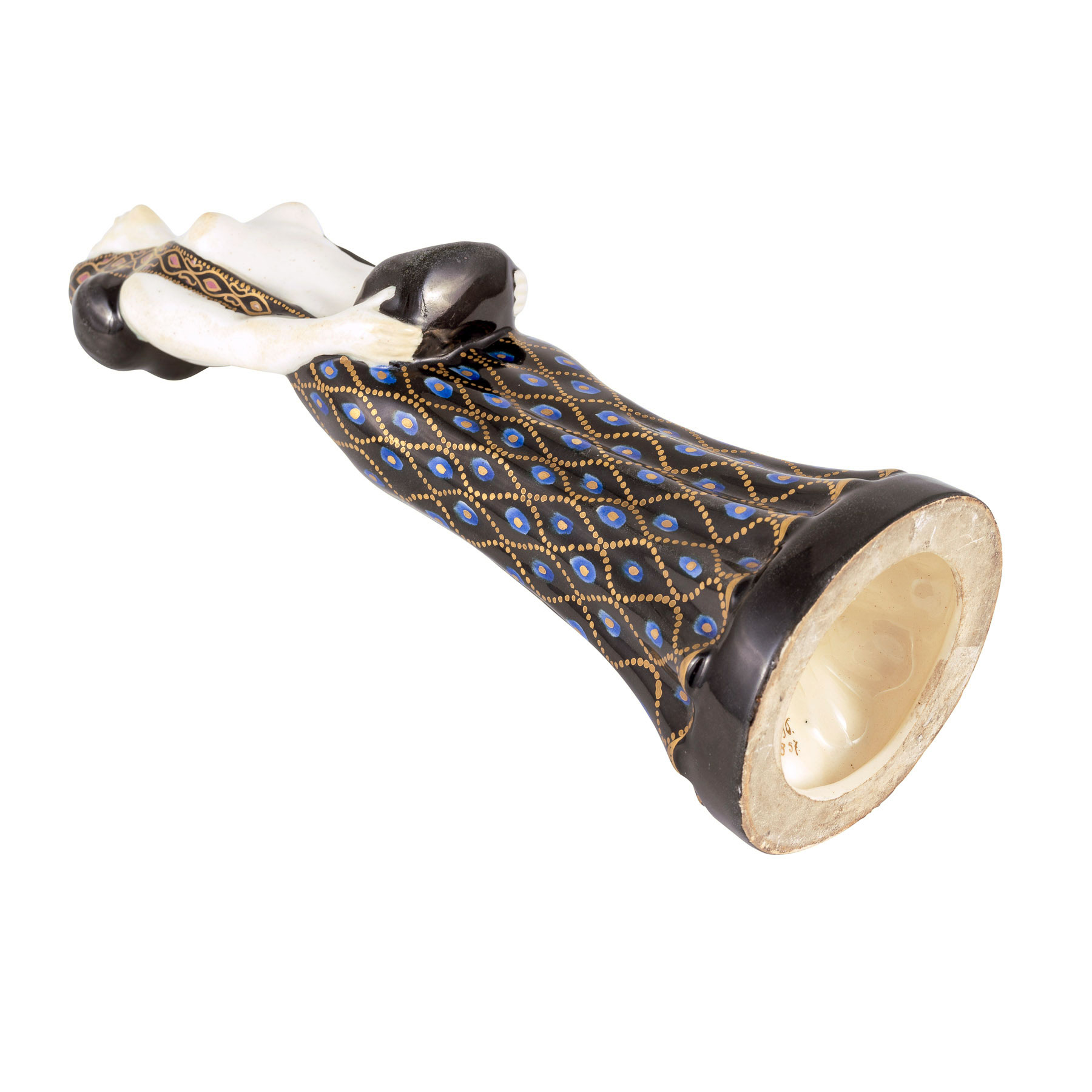“Salome” Karl Klaus Ernst Wahliss ca. 1912 Serapis-Faience
Secessionist Figurine “Salome with head of John the Baptist”, design Karl Klaus, manufactured by Ernst Wahliss Wien, ca. 1912, Serapis-Faience, marked
on the bottom handwritten “1496” (form), “857” (decor), engraved “F“, 1496”; marked with green company stamp “Wahliss Serapis”
Out of stock
Description
In the decade around 1900 the biblical story of Salome was quite present in Europe’s cultural life. Oscar Wilde’s one act tragedy premiered in Paris in 1896 causing a scandal, and Richard Strauss’ highly dramatic opera “Salome” premiered in 1905.
Karl Klaus used the motif of Salome several times. There is a design of the dancing Salome or, as here, Salome with the head of John the Baptist. Both ceramic figurines could not be more different. While in the dancing Salome the seductive dynamics prevail, this Salome presents herself in a hieratic posture with raised head. This statuette captures the climactic moment in which the proud princess presents the head of John the Baptist in a bowl. He dared to resist her seduction and spurned her, whereupon the offended princess demanded his beheading from her stepfather.
Klaus ingeniously uses the material in depicting Salome’s denuded bosom by leaving the white ceramic uncolored, while decorating her veil and robe with lavish secessionist ornaments.
Inquiry
By submitting the inquiry form, you agree to the use of your data for this inquiry. Privacy Policy



















